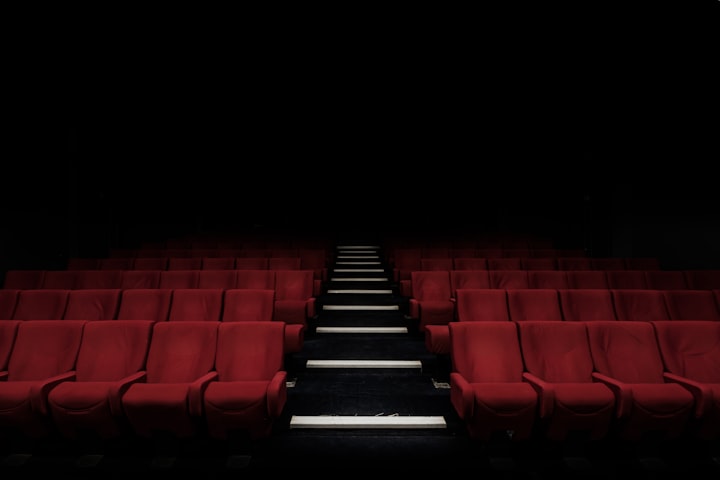Loving the Evil of Vampires
Why do we find ourselves so drawn to vampire mythology? Why not fall in love with monsters, ghosts, or mummies?

We are all guilty of it as much as we may deny it. We have read Twilight, or The Vampire Diaries, or Vampire Academy, which all had spin-off movies and television shows. But when did vampires become lovable creatures that readers want to have bite them? When vampire stories first emerged in the Victorian period, vampires were scary, awful, creepy creatures. People were afraid of them, not in love with them (Stevenson 198). Now however, vampires are a part of popular culture with people fawning over Team Stefan or Team Damon or any of the other vampire love triangles adorning our bookshelves and televisions. Perhaps this is because society itself has changed over the last two hundred years since “Some of what Victorians found horrible now seems pretty cool. For example, where they (vampires) once seemed creepily strange and deviant, they now seem freethinking and uninhibited” (Stevenson 207). A vampire’s unwillingness to submit to common societal graces during the Victorian period made them outcasts and were thus scary to those on the inside of society, whereas now, being the outcast is considered cool and interesting (Melton xvii). Joanna Russ’ short story, My Dear Emily from 1962, shows the beginning of this transition from fearing to loving vampires through the character of Emily.
In the 1960s when Joanna Russ was writing My Dear Emily, the world outside her writing room was rapidly changing with the start of the uprising of the counterculture. Young people were beginning to, “oppose the prevailing social norm” (“Counterculture”) and act out against society for many reasons including, “human sexuality, women's rights, traditional modes of authority, experimentation with psychoactive drugs, and differing interpretations of the American Dream” (“Counterculture of the 1960s”). Artists needed ways to connect with these young idealists who wanted to change the world and be on the outside, and what better way than through vampires, the ultimate outcasts. Russ uses this idea in her short story by having Emily choose the vampires Martin and then Charlotte over the accepted and expected ideas of becoming a dutiful wife (Russ) as she, “gains freedom from the stifling world she was born into when a vampire takes her as his prey and lover” (Dewees). Emily is free to choose her own destiny, which is part of what the counterculture of the 1960s was about. This explains the hype of vampire stories in the 1960s and for younger generations still looking to make their mark on the world, but how have vampires remained a constant in even today’s popular culture fifty years later?
Probably because vampires still call to the young girl in all females who secretly loves the bad boy. Dr. Vranich believes that “Vampires are the archetype of bad, bad boys. If you had to choose a monster “type,” you’d have to choose between the untamed brutish King Kong type—misunderstood, muscular, who probably spends way too much time at the gym and not enough time expanding his vocabulary—and Frankenstein, who would be that mate we tried to build ourselves, our vision of a combination of the best traits of a few lovers…Zombies and mummies were never sexy—eroding bodies or unfurling bandages are absolutely the opposite of “hot”…And while Hugh Jackman has given the werewolf-like character of X-Men a breath of life and chance at the title, the sexy monster of all time continues to be the vampire—the quintessential bad boy who reeks of danger, and is very, very naughty” (Vranich). In My Dear Emily, Emily knows that Martin is bad in the beginning when she screams at him, “What are you doing at a church supper, you hypocrite!” (Russ 519) referencing his evil, vampiric nature, but in the end, it is him that she chooses over all, even knowing his terrible traits when she questions, “Why didn’t I leave this life when I had the chance!” (Russ 530). Emily willingly chooses the bad boy in Martin because he is what gives her life even in death. She is willing to overlook his bad boy nature, which is what every young girl imagines in her bad boy fantasies, that he will love her enough to change and she will love him enough not to want him to change. Still, maybe it is more than just being the bad boys of literature that lead female readers to vampire stories. Newer vampires, like the Cullens in Twilight or Stefan Salvatore in The Vampire Diaries, are not depicted as bad boys, but are instead sensitive and caring to their lovers.
According to Douglas T. Kenrick Ph.D., vampires attract women readers because of evolutionary psychology, which states that women like men with money and the ability to protect their offspring, and, “As it turns out, vampires often represent exaggerated versions of the features women find attractive in real life” (Kenrick). For example, since older people tend to have accumulated more wealth, women often marry older men, although they prefer to date within their own age bracket. “Vampires have the advantage of being able to live forever. So, they have thousands of years to acquire resources. From Dracula’s massive Transylvanian castle to the Cullens’ sprawling modern mansion, most vampires don’t live like paupers. And their immortality allows them to maintain a youthful appearance, so the women who fall for them don’t have to choose between a guy with resources and a guy with healthy youthful features such as symmetrical faces, masculine physiques, and overall vigor” (Kenrick). In Russ’ My Dear Emily, the vampire, Martin, can attend parties with, “acquaintances of such position and character” (Russ 518) meaning he is rich enough to be considered well-off to the other characters of the Victorian setting. He is also described as having a “handsome, unnaturally young face” (Russ 519), which could explain why Emily is attracted to him. She chooses him over “sweet Will” (Russ 531) because he is the better choice for her life. He is handsome and well-off. Why though does this appeal so much to readers who know that it can never really be true? No vampire is really going to ever steal readers away from their real lives.
Lisa France, a writer for CNN, believes that people are drawn to vampire stories as a new version of escapism. Why enjoy your boring, mundane life, when you could instead pretend to be living the high life with a rich, sexy vampire to fill your every whim? “According to the Romance Writers of America, romance fiction generated $1.37 billion in sales in 2008” (France), most of which came from the sub-genre of paranormal romance because romance sells, especially during tough times. When polling readers, CNN found that, “women were still craving a white knight to sweep them off their feet” (France). Female readers want to escape into a world where they no longer need to worry about money, love, or anything else that may be plaguing their real world. “One twenty-something woman explained it to me like this, she said ‘Well, I just got out of college and I can't get a job, none of my friends can get jobs that will let us be able to move away from home, so if we can't wait for Prince Charming to come rescue us what are we going to do?'” (France). In My Dear Emily, Emily chose Martin and later Charlotte rather than her expected life as a wife because they both offer her what she considers a better life with freedom, love, and happiness. She even describes Martin as her, “life and hope and only pleasure” (Russ 531). Vampire stories, like My Dear Emily give readers an escape into a world where they can be and do whatever it is that they secretly want, but cannot get in their real-world lives.
Ultimately, vampire stories, like Joanna Russ’ My Dear Emily are popular among readers because they allow them to escape into a world where it is accepted to be an outcast, to be strange, to be in love, to be bad, and to do whatever it is they secretly want. The real world looks down on outcasts as being strange, but we are all a little strange in our ways. Vampire stories accept that part of us that we must hide from the rest of the world. Vampire stories let us be so in love that we are willing to die for each other, but our love can live on past that death. They let us show our evil side that is hidden from the real world. Readers can kill, maim, and drink blood, but it is alright because our vampire loves us regardless. My Dear Emily may have been written to show the 1960s counterculture, but it and other vampire stories have endured because of their immortal ability to give readers freedom from the real world.
Works Cited
"Counterculture." Wikipedia, Wikipedia. Accessed 18 June 2018.
"Counterculture of the 1960s." Wikipedia, Wikipedia. Accessed 18 June 2018.
Dewees, Amanda. "Halloween Vampire Anthology." Amanda Dewees. Accessed 18 June 2018.
France, Lisa R. "Vampire Romance Novels Suck in Readers." CNN Entertainment, CNN, 25 Nov. 2009. Accessed 18 June 2018.
Kenrick, Douglas T. "Supernatural Stimuli: Why Women Love Vampires." Psychology Today, Psychology Today, 29 Oct. 2016. Accessed 18 June 2018.
Melton, J. G. "Introduction." The Vampire Book. 3rd ed., Visible Ink Press, 2014, p. xvii.
Russ, Joanna. "My Dear Emily." The Dark Descent, edited by David G. Hartwell, Tor, 1987, pp. 516-31.
Stevenson, Jay. "Written in Blood." The Complete Idiot's Guide to Vampires. Alpha, 2009, pp. 198-207.
Vranich, Belisa. "Why We Love Vampires: The Psychology Behind the Obsession." Huffpost, Huffpost, 23 July 2010. Accessed 18 June 2018.
About the Creator
Kristen Barenthaler
Curious adventurer. Crazed reader. Archery fanatic. Amateur author. Librarian.
Instagram: @kristenbarenthaler
Facebook: @kbarenthaler
GoodReads: https://www.goodreads.com/author/show/15101108.Kristen_Barenthaler






Comments
There are no comments for this story
Be the first to respond and start the conversation.